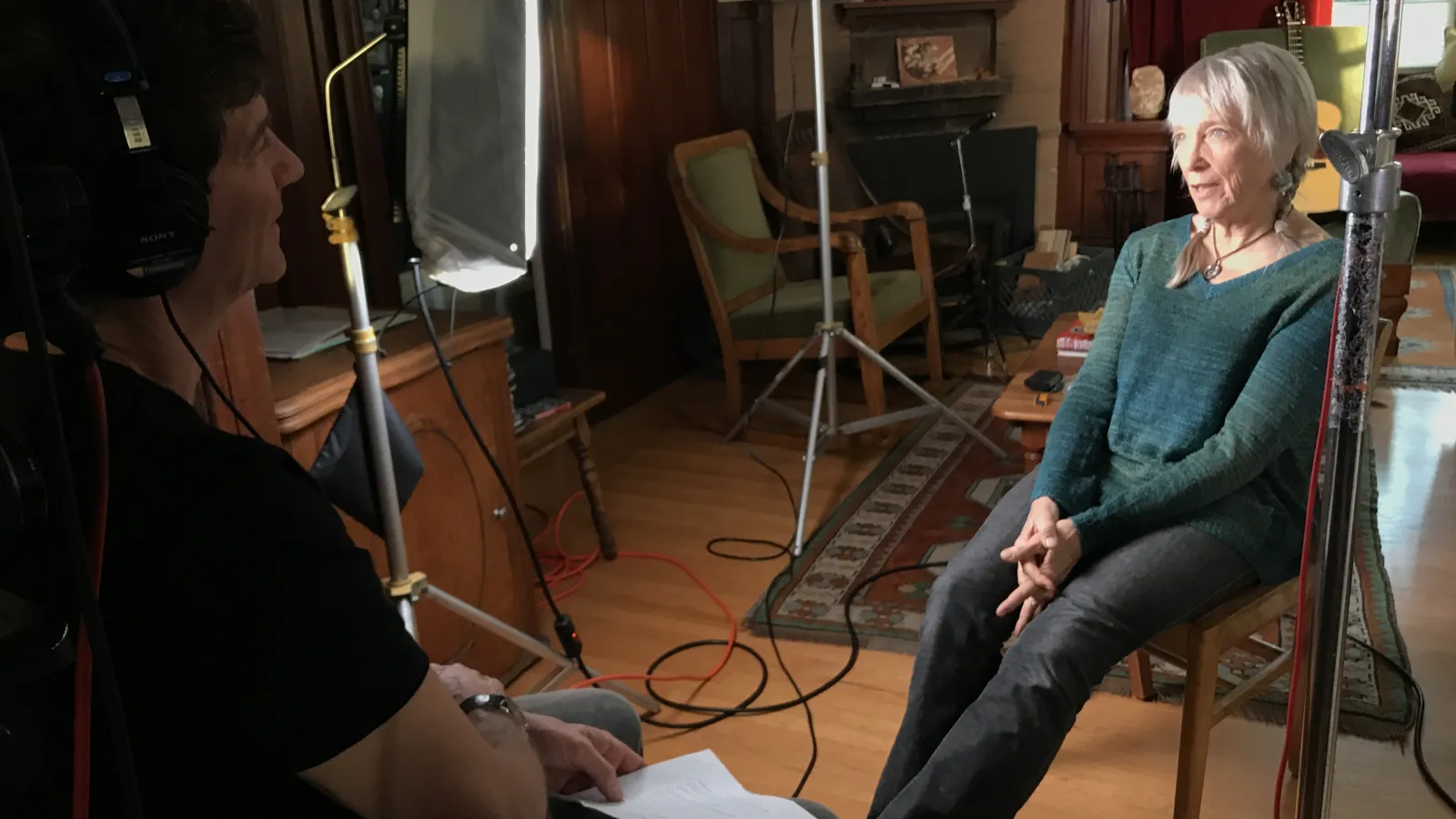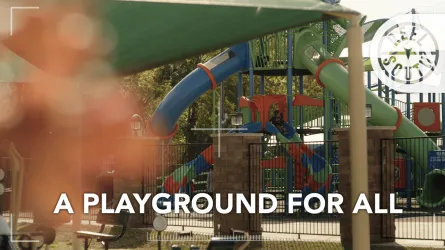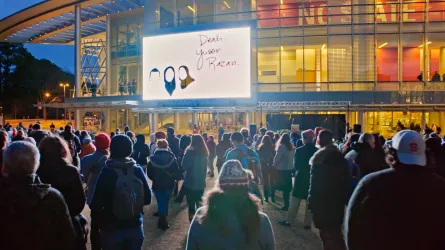At 84, old-time music pioneer Alice Gerrard still performs, teaches, and inspires the next generation, while safeguarding groundbreaking moments of her past. Kenny Dalsheimer captures this intimate portrait of ever-youthful Alice, and her remarkable, unpredictable journey creating and preserving traditional music. Her's is a story about getting older but never giving up. Prior to the film's Reel South debut, we connected with Dalsheimer to learn more about the backstory of the film and unique, memorable moments he had with Alice.
This interview has been edited and condensed for clarity.
What inspired you to make your film? How did you get connected with your subject?
I first heard about Alice Gerrard and her music in 2015 at a friend’s birthday. Musicians playing at the party suggested I make a film about Alice, who, they added, after a lifetime in music had just been nominated for a Grammy Award. I went home and spent time researching about Alice’s life and music. The more I learned the more curious and excited I got. It was after I received an email from acclaimed Southern documentarian and historian William Ferris urging me to pursue the project that I met up with Alice at a coffee shop to talk about this idea for a film. After some thought, and being a documentarian of old-time music herself, Alice agreed to put up with me and my camera. After spending time with Alice at her home, seeing her expansive photo archive, and shooting the first hours of footage, I was hooked.
Were there any parts you wish you could have included in the film? If so what were they?
One of my organizing guides for the film was to use Alice’s catalog of songs to tell the story. Early in post-production, I edited two scenes with two of my favorite songs, along with footage and photographs that illuminated important people in Alice’s life. “Sweet South Anna River” is a beautiful song inspired by Alice’s musical and personal relationship with Elizabeth Cotton. Alice has a treasure trove of photographs and audio recordings capturing Elizabeth Cotton, her music, and her connections with Alice, with Mike Seeger and his family, and with so many others.
Another rough cut scene that did not make it into the film was about Alice’s childhood growing up with a mother living with severe rheumatoid arthritis. The idea for this scene was informed by the haunting song “Agate Hill," which Alice wrote after her mother died as a way to process their complicated and challenging relationship and, as Alice once said, "To move beyond the old garbage."
A final scene, which I loved shooting, was with Alice and others at the historic Women’s March in Washington D.C. in January of 2016. The footage, shot over two days, revealed much about Alice’s social justice activism, connections to family and friends, and her love of taking pictures. I used the tune “Tear Down the Fences,” which Alice had recently recorded with Kay Justice and others, in this scene concept. This Olla Belle Reed anthem of moving beyond what divides us just worked so well with the message of women’s rights and social justice being amplified at the Women’s March.
Were there parts with very interesting backstories that weren't totally relayed in the final film? Or what was your favorite behind-the-scenes moment?
There are two important people that didn’t make it into the film, though both make appearances.
Alice crossed paths with Bill Monroe in the late ’50s and '60s during historic moments in early bluegrass history. I had some great photographs, audio recordings, and storytelling about Bill and Alice. I love the story of Bill asking Alice and Hazel to sing one of his songs, “The One I Love is Gone;” the song but not the story make it into the film. Bill and his band were staying at Alice’s house in D.C., and Bill said, "I have a song and I think it would be really great if you girls would record the tune." Alice also has an intimate and historically significant audio recording of her interview with Bill about his life and music, but that did not make it into the film.
Another backstory is Alice’s relationship with the super talented young fiddler, Tatiana Hargreaves. Tatiana moved to Durham mid-way through production and began helping Alice organize photographs and scan negatives in Alice’s archive. I shot Tatiana and Alice working together and playing music in various settings. Towards the end of editing the rough cut, filmmaker friends encouraged me to interview Tatiana, to include her voice in the film and explore her connections with Alice and the ways younger musicians are inspired by Alice, are building their own connections with old-time music, and are carrying on the tradition themselves.
And of course, there is plenty of entertaining footage of Alice and her dog Polly, including one where Alice asks Polly to find her hidden cell phone. Polly does sniff it out, but it took about five minutes.
What do you hope people learn/hope they take away from your film?
For more than half a century, Alice’s contributions to old-time and bluegrass music have been a bedrock to thousands of musicians and musical communities across the globe. I want the film to share Alice’s inspiring life story and the ways music connects with our lives, with social justice, with a wide range of our emotions, with the community. I also want the film to introduce viewers new to this music the richness and importance of rural traditions and Southern and Appalachian music. The ‘subject’ of the film is more than the story of one musician. It’s a story about many music lovers and musicians contributing to the subtle and vital work of transcending barriers of race, gender, class, and geography and championing music rooted in community and people’s lives. As Alice shared, “Music really does cross a lot of boundaries.”
Finally, I want the film and Alice to nurture and inspire younger musicians, women musicians, and be a touchstone for the next generation of Americana, old-time, and bluegrass musicians.
Is there anything else you'd like to share with the Reel South audience?
The South is such an important place where so many stories, so much creative energy has unfolded and continues to unfold. These stories need to be told and shared as a way to better understand the totality of experience in our big country.
What advice would you give other filmmakers or others interested in documentary film?
I’d first share the advice I received from filmmaker friends over twenty years ago — just make a film and learn through the process of creating.
I’d add to choose a subject, an issue that resonates with you and that would be a fun first project and to find at least one or two collaborators to help in the creative and — oft-overlooked— financial (e.g. fundraising, budgeting) chores of filmmaking.
Finally, watch a variety of documentaries that represent different styles and approaches to telling stories. In this continuum of styles, see what feels most comfortable and think about how you will tell your story.
Can you complete this sentence: "What defines you..."
We are defined by our relationships, family, community, social and political climate, and , perhaps most importantly to me, our creative and artistic endeavors. "You Gave Me A Song" captures the ways music, one of the most powerful "defining us" art forms, in my opinion, defines us, both musicians and listeners. Music is how we tell stories, express all kinds of emotion, bridge cultures, build community, challenge injustices, and are moved to action.
Category
Share


